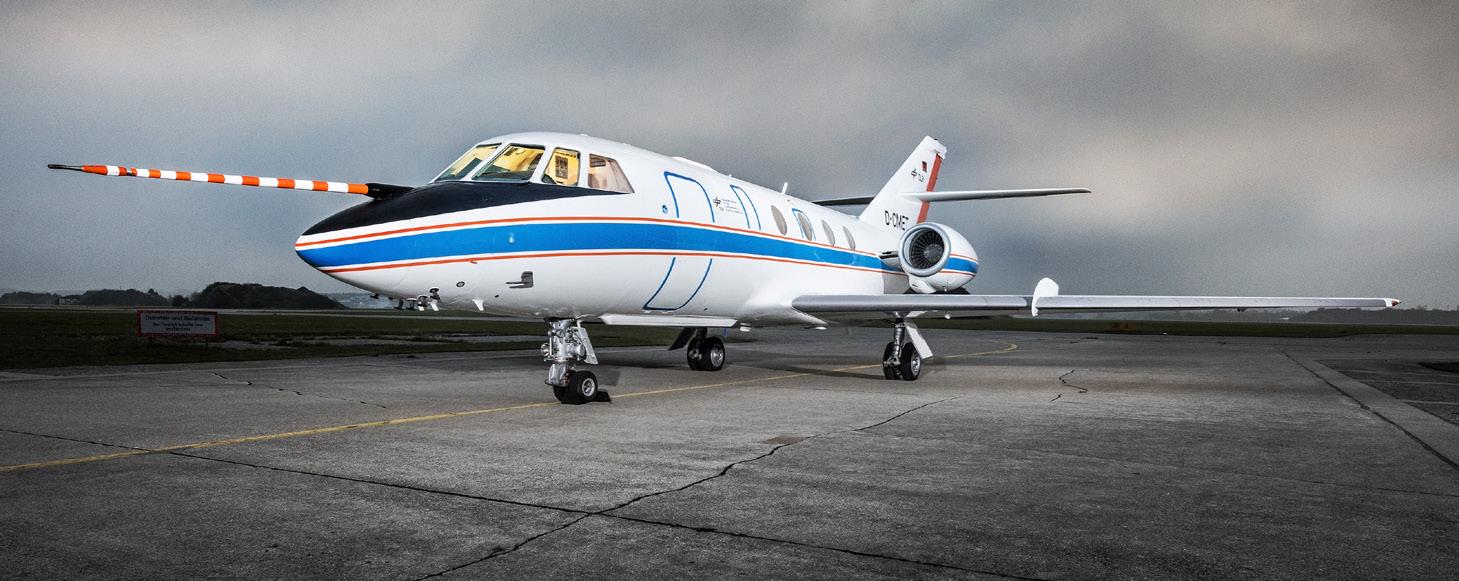
3 minute read
I Get Paid for This… Thomas van Marwick
Flying for science – DLR pilot Thomas van Marwick conducts research missions all over the world.
Interview by Yayeri van Baarsen.
Advertisement

How did you get into flying?
I’ve been keen on aviation all my life and after school I joined the German Airforce for a 12-year duty cycle. During that time, I got my officer’s training, an aeronautical engineering degree, and as an IT trainer for personnel worked mainly with the Tornado and Eurofighter software. Following that, I decided to put my theoretical knowledge into practice and started my pilot training.
Tell us about your job?
I’m a pilot for the DLR’s Flight Experiments Facility in Oberpfaffenhofen, flying the Cessna 208B Grand Caravan, Dornier 228-212, and Falcon 20E for atmospheric research and remote sensing. We support customers with planning, execution and post-processing of scientific research flights.
My work has taken me all over Europe, as well as to remote places like Northern Canada, Greenland, Iceland and Gabon. Flying for science means collecting data with our highly modified aircraft. The focus is really diverse, some scientists want to fly very low to get samples of the composition of the aerosols inside the boundary layer, while others need to fly at high altitudes to get a good image of thesurface of the Earth with radar and optical sensors. Some even need to enter the lower stratosphere with our jets. In one flight the main task might be the accuracy of the flight trajectory (especially for the radar sensing missions where we fly in an approximate corridor of +/-2 meters with our Dornier), in the next sortie data may be found while analysing aircraft emissions at close distance. Sometimes timing is a key factor, for example when flying below satellite tracks for instrument validation.
What I like most about my job is that I get to fly DLR’s aircraft in a non-standard environment. The mission always varies and every sortie has to be especially coordinated with aviation authorities around the world – every flight is truly unique.
What training did you have?
A frozen ATPL combined with an engineering degree enabled me to start my career with DLR in 2013, as a pilot for the department of Flight Experiments. My on-the-job training began with simulator sessions and a lot of flying our Dornier 228. Advancing in the company, I’ve had the opportunity to gather experience in aerobatics, upset recovery, in a variety of CRM and Flight Test Techniques factors, and as a flight instructor.
What’s been your favourite flight?
A sortie out of Keflavik (Iceland) with our Falcon 20 in 2019. During flight preparation, ground staff were uncertain if they’d even open the huge hangar doors because of the 40kt wind gusts… Since Icelandic weather isn’t our everyday business, we were happy they took the decision for us. The task was to depart immediately to catch up underneath a satellite between Iceland and Greenland. Just in time, the wind calmed down. We hit the rendezvous point and reached north-eastern Greenland with the sun setting behind the glaciers – a wonderful picture. On the way back, we experienced a cabin pressure alert at FL390. We had to react quickly and initiated an emergency descent. While descending, cabin pressure stabilised in acceptable limits so we continued, and the scientists could finish collecting their data.
And your favourite airfield?
Kulusuk, a gravel strip in East Greenland, located near the shore, between icebergs and the incomparable wideness of beautiful Greenland. I went there with our Dornier 228 in 2015.
Do you get to fly much outside work?
Yes, I really enjoy sharing my enthusiasm for flying, so I’m a flight instructor and regularly take family and friends in our local flying club aircraft. For me, flying is more than just a profession.
What’s your most valuable career advice?
Don’t take yourself too seriously, be modest and do your best. Accept that there’s always somebody who has more experience. Aspire to perfection, but always accept good advice.
Flying CV
Pilot for the Department of Flight Experiments at the German Aerospace Centre Oberpfaffenhofen, Thomas van Marwick flies atmospheric research and remote sensing missions.
Started current job: 2013
Now flying: Cessna 208B Grand Caravan, Dornier 228-212, Falcon 20E
Favourite aircraft: F-4 Phantom – I loved its design when I was a child. I’d love to fly one!
Hours at job start: Approx. 300
Hours now: Approx. 2,500










